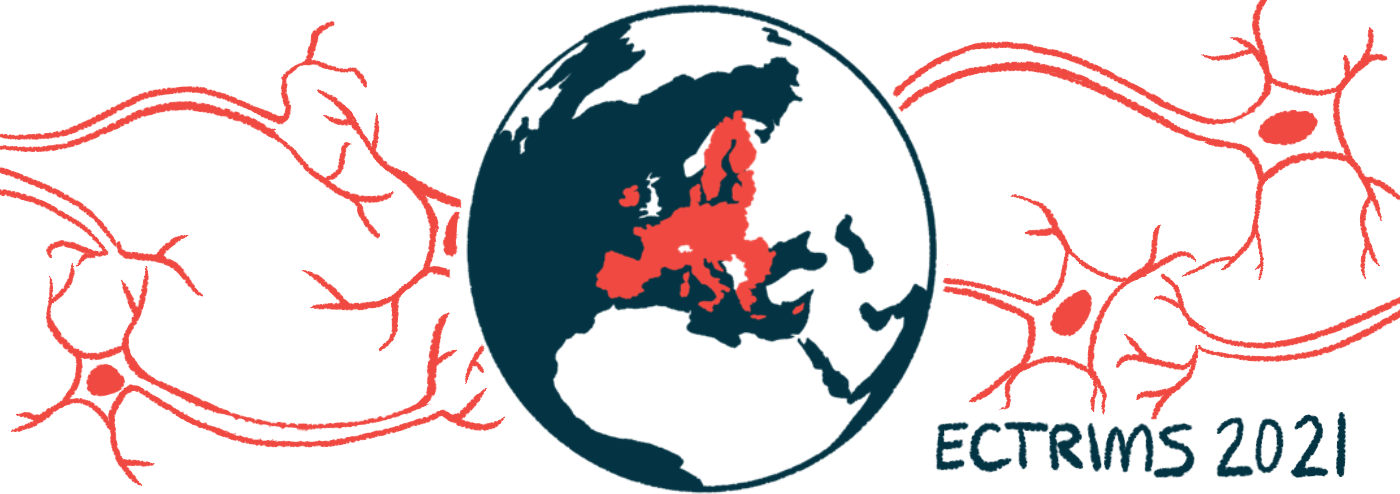#ECTRIMS2021 – Relapse-free Worsening More Likely in Late-onset MS

Editor’s note: The Multiple Sclerosis News Today team is providing in-depth coverage of the virtual 37th Congress of the European Committee for Treatment and Research in Multiple Sclerosis (ECTRIMS), Oct. 13–15. Go here to see the latest stories from the conference.
People who develop relapsing forms of multiple sclerosis (MS) later in life are more likely to experience worsening disability in the absence of relapses, and are at higher risk of transitioning to secondary progressive MS (SPMS), according to a new analysis.
“Age group at onset appears to be one of the main determinants” of disability progression, according to Angelo Bellinvia, MD, of the University of Florence, who discussed the findings at the 37th Congress of the European Committee for Treatment and Research in Multiple Sclerosis, Oct. 13–15.
The oral presentation was titled “Progression independent of relapse activity in paediatric, adult and late-onset multiple sclerosis patients.”
Findings shared in a poster, “Progression independent of relapse activity in early multiple sclerosis patients and risk of secondary progression: an Italian multicentre study,” also showed that this form of disability progression is already present in the first years after disease onset, contrasting with prior studies that consider it “a feature of more advanced stages,” Bellinvia said.
In most people with MS, the disease is characterized by relapses, times when symptoms substantially worsen, typically followed by remissions where symptoms ease. Sometimes, a person will have more profound disability after a relapse, which is termed relapse-associated worsening or RAW.
However, not all disability progression occurs in the context of relapses, even in people with relapsing types of MS. This is called progression-independent of relapse activity (PIRA). It is generally believed that RAW tends to occur earlier in the course of MS, while PIRA is more characteristic of latter disease stages. However, new research is challenging this idea, Bellinvia said.
To gain insight, Bellinvia and colleagues analyzed data from an Italian MS Registry. The team identified 5,287 patients initially diagnosed with relapsing-remitting MS or clinically isolated syndrome, who were followed for at least five years.
Among the patients, 329 had pediatric MS (age of onset younger than 18 years), and 204 had late-onset MS, with disease onset at 50 years or older. The remaining 4,754 patients had adult-onset disease, with symptoms developing between the ages of 18 and 49.
Using statistical analyses, the researchers compared rates of disability progression among these groups. Over an average follow-up time of 11.4 years, overall six-month confirmed disability progression was significantly more common among patients with late-onset MS (61.3%) than in adult-onset (45.9%) or pediatric MS (41%).
The proportion of confirmed disability explained by RAW or PIRA varied with age of onset.
“Adult-onset and late-onset MS patients had higher rates of PIRA, rather than RAW, while this proportion was inverted in pediatric-onset MS patients,” Bellinvia said.
Statistical analyses demonstrated that PIRA was significantly more common in late-onset MS, whereas RAW was significantly associated with pediatric disease. PIRA was also significantly associated with a lower number of relapses prior to the worsening disability, whereas RAW was associated with a higher number of previous relapses.
Both forms of disability progression were more common in people with relatively mild disability when they were entered into the registry. PIRA was significantly more common in people who had been living with MS for longer, while RAW was not significantly associated with disease duration.
The risk of both RAW and PIRA was lower with longer exposure to disease-modifying MS treatments (DMTs).
Over the 11 years of follow-up, rates of transition to SPMS varied significantly based on age at onset: 2.4% in pediatric-onset, 6.1% in adult-onset, and 13.7% in late-onset.
Across all patients, greater disability and more relapses significantly predicted conversion to SPMS. Patients who spent more time being treated with DMTs were significantly less likely to progress to SPMS.
“Early treatment with DMT was effective in preventing the occurrence of any [disability progression], both RAW and PIRA, and, in turn, slowing down the transition to the progressive phase, reducing the long-term burden of the disease,” the researchers concluded.








